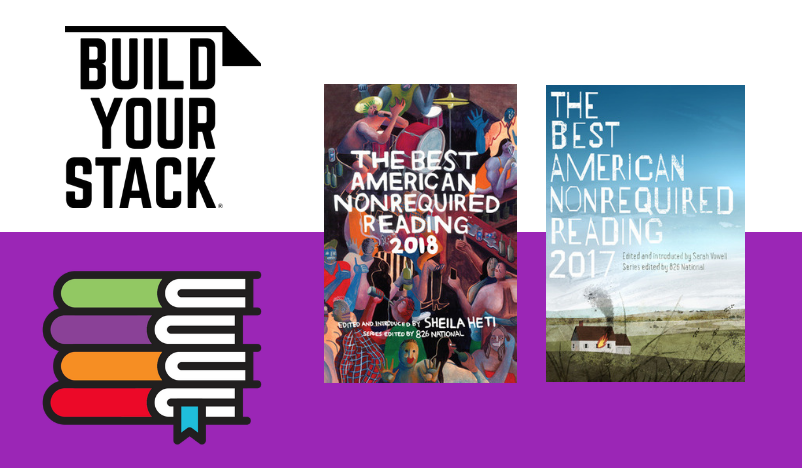This blog post is part of Build Your Stack,® a new initiative focused exclusively on helping teachers build their book knowledge and their classroom libraries. It was written by NCTE member Shawn Towner.
I think about my experiences as a reader a lot when I think about my classroom library. In middle school and high school, I read the same Dragonlance and Star Wars books over and over again. In my first two years at college, I didn’t read much of anything. My junior year, I took an English class that used a short story anthology. Skimming the table of contents, I noticed that one story was only a couple pages long. That story was Donald Barthelme’s “Game.” I read it and it was unlike anything I had read before. I was started on the path to becoming an English major and teacher.
I want readers in my classroom to have the same opportunity to be enticed and amazed by short texts and to let those texts lead them to more extensive reading. In building my classroom library, I’ve found one series that consistently succeeds in providing short but sweet readings: The Best American Nonrequired Reading anthology.
For each edition of The Best American Nonrequired Reading series, a guest editor and a team of high school students curate a collection of interesting texts, ranging from more traditional anthology selections like short stories and articles to collections of tweets or jokes from The Daily Show. When I give one of these books to a student who can’t decide what to read, they can look through the table of contents and, as I did in Professor Vesterman’s class twenty years ago, see selections that are only a couple of pages long and say, “That’s not too long. I can read that.”
Perhaps reading a Vice article or an excerpt from a graphic novel will help a reluctant reader see the joy and value of reading. If not, there are a couple dozen other pieces in the anthology that might. Even the description on the back of the book is enticing. The 2016 edition advertises: “stories about Bulgarian spaceships, psychedelic mushroom therapy, and a cyclorama in Iowa. If you don’t know what a cyclorama is, you aren’t alone. Read on to find out.” The books sell themselves to readers.
When I have a student who’s struggling to find something to read during independent reading time, I’ll guide them to the shelf with The Best American Nonrequired Reading. I’ll choose a year at random and tell the student to look through the table of contents and try to find an interesting title or just to choose something short and start there. If they start reading something that doesn’t interest them, they can try another selection. That’s what readers do.
Some of my favorite stories to recommend to students include the following:
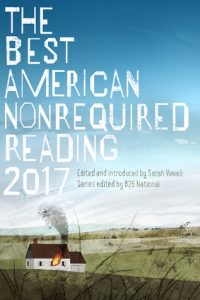
Benjamin Nugent’s “Hell,” a short story that could be mistaken for nonfiction, tells the story of frat boys who ask an alumnus to use his experience with military interrogation to improve the frat’s Hell Week. (Originally from Vice, anthologized in Best American Nonrequired Reading 2017)
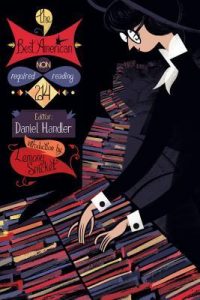
Zadie Smith’s “Joy” serves as a short introduction to an author more known for longer works. In her essay, Smith ponders the meaning of joy and its relation to pleasure, using egg sandwiches, music, and romantic crushes as points of emphasis. (Originally from The New York Review of Books, anthologized in Best American Nonrequired Reading 2014)
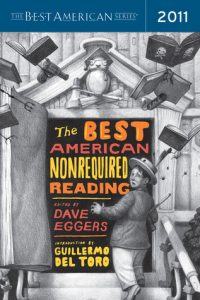
I’ve taught most of my career in Arizona, so the collection of Best American Poems Written in Response to Arizona Senate Bill 1070 has proved very popular with students. It presents short poems about anti-immigrant politics that, even though they were written in response to a 2010 bill, are still relevant and meaningful in today’s political climate. (Best American Nonrequired Reading 2011)
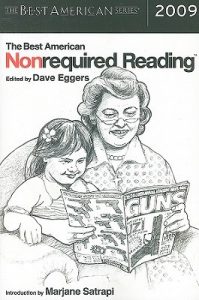
Michelle Seaton’s “How to Work a Locker Room” is a piece that tricks readers. It seems that it’s going to be about sports journalism, with the 2nd-person imperative voice of a how-to guide. But the story subtly shifts to become a story about abuse, pain, and empathy. (Originally published in The Pinch, anthologized in Best American Nonrequired Reading 2009)
Sometimes students will continue reading other selections from the same edition of The Best American Nonrequired Reading. More often, they learn that the books on that shelf are perfect for quick reads. They’ll alternate back and forth between editions over the course of several days. These students might not be adding to a big stack of completed novels, but they’re reading. And as they find more selections they like from the anthologies, I can try to recommend other books or authors that might give a similar experience.
Every winter break, I make a trip to the bookstore to pick up the latest edition of The Best American Nonrequired Reading to add to my classroom library. I know it will quickly find its way into the hands of a student who might not know what they want to read. And I hope that one of those students will find in the book the spark to ignite their reading life.

Shawn Towner is a high school English teacher and a Ph.D. student at Arizona State University. He has a cat named Duffy.

